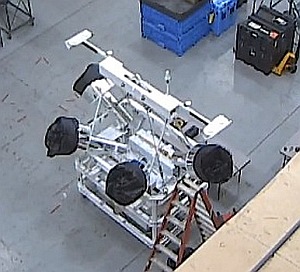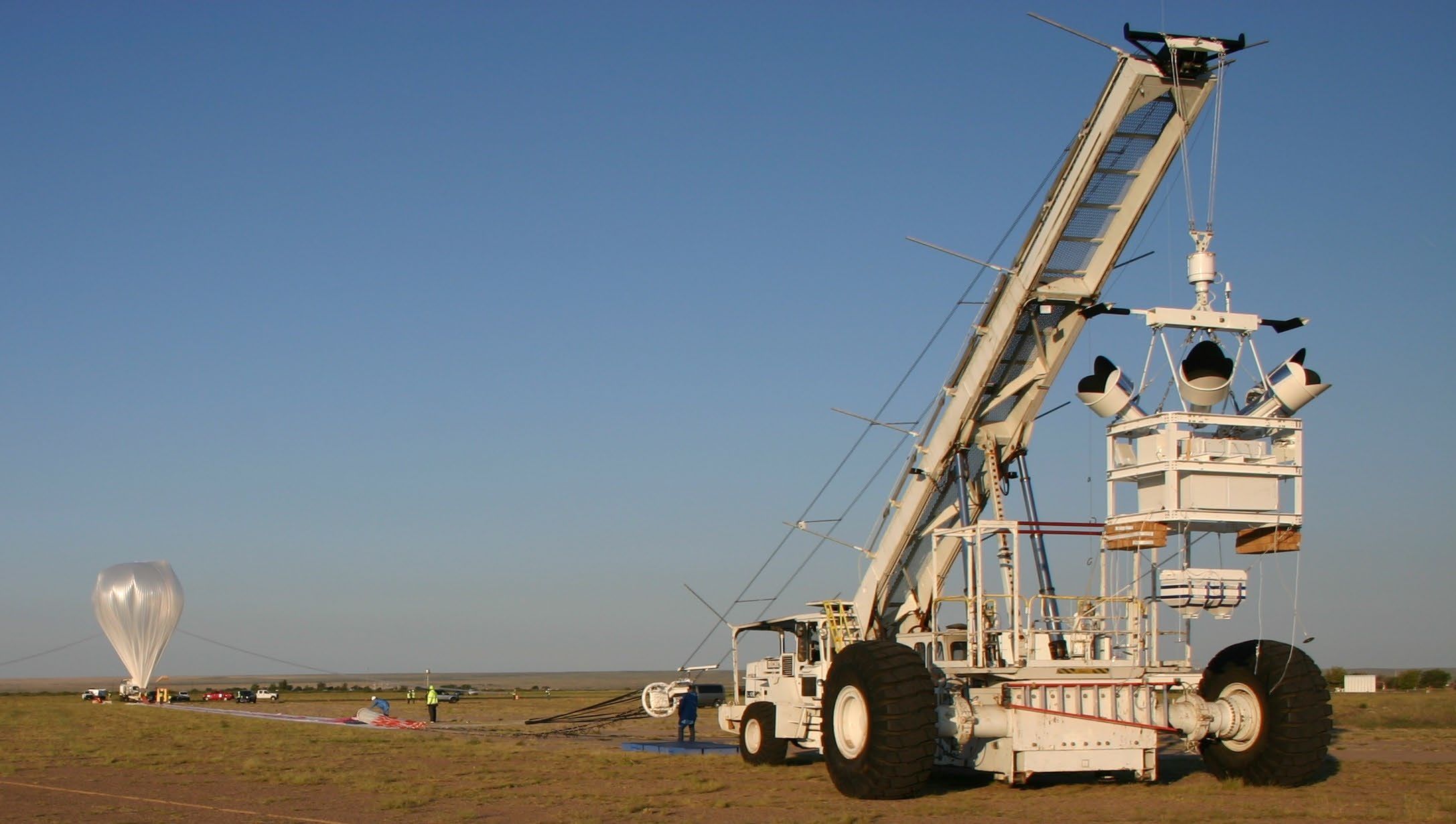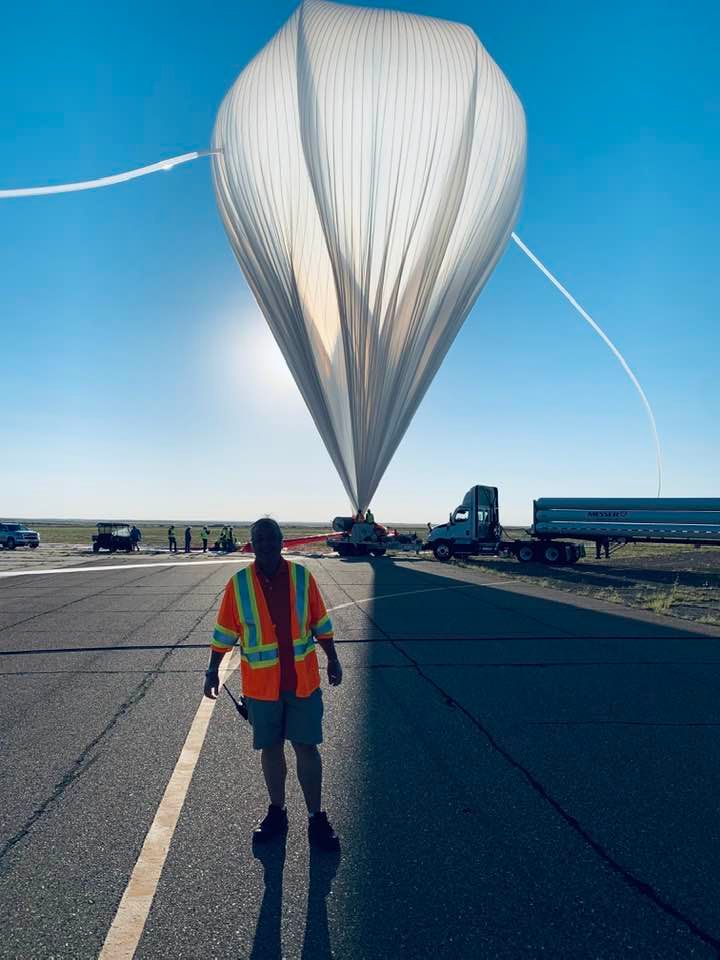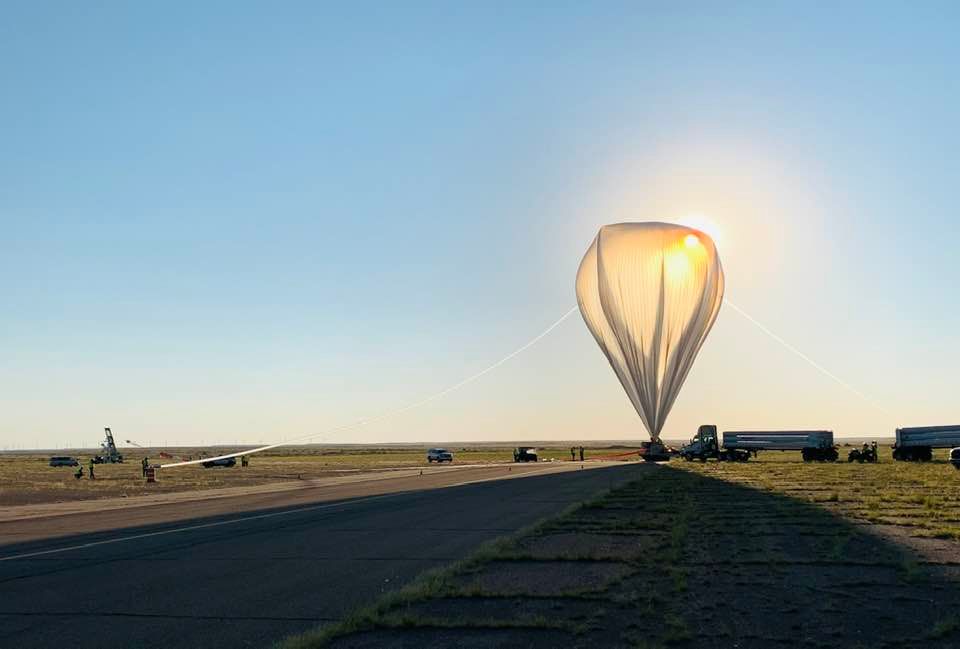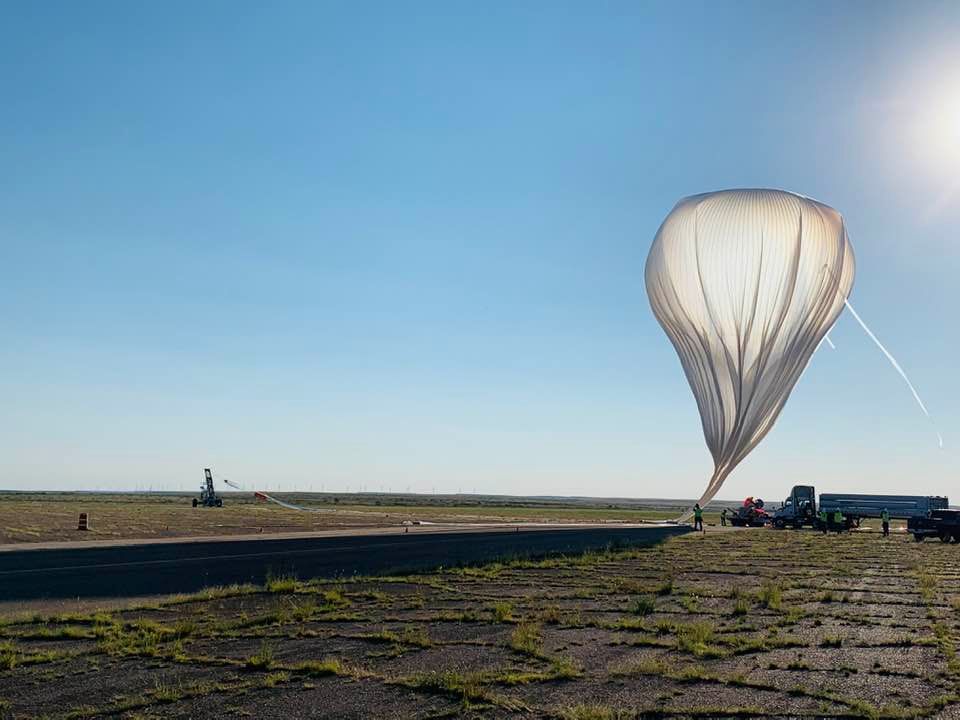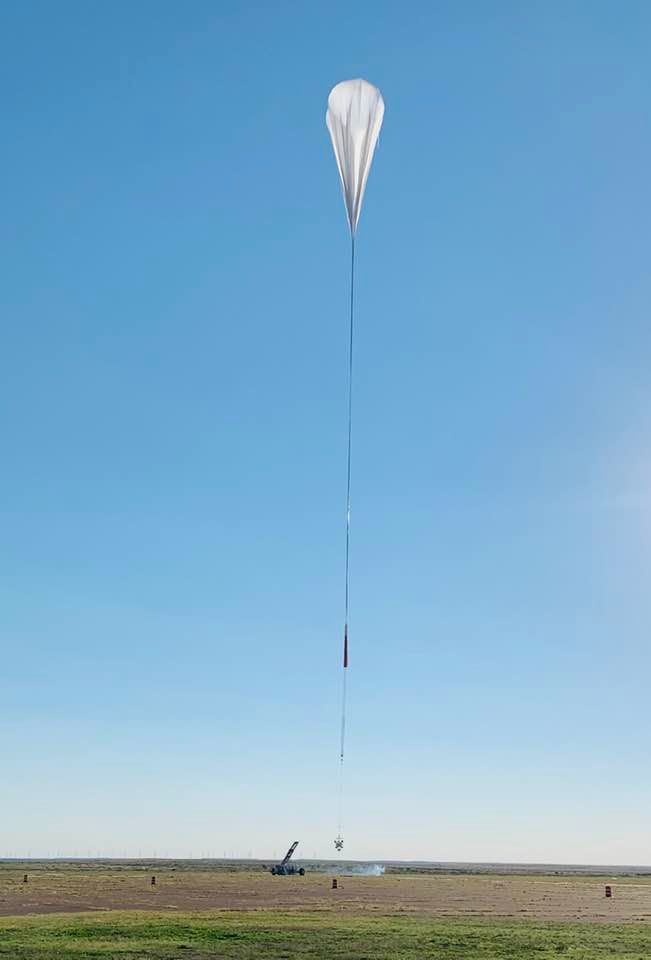Purpose of the flight and payload description
BALBOA (BALloon-Based Observations for sunlit Aurora) is an instrument developed at the University of California, Los Angeles, aimed to test a wide-view infrared camera designed to study daytime auroras. At left we can see a capture of a image of the payload of the present balloon test. A more detailed view can be seen in the first image at right. The pathfinder balloon-borne mission was named after the 15th-century Spanish explorer Vasco Núñez de Balboa who more than 500 years ago, traveled to the New World.
Since 1892, when an aurora was first imaged by Martin Brendel, a German physicist, auroral forms and their dynamics have been acquired only when the aurora is in darkness. Due to the sunlight contamination from Rayleigh scattering, it has been a long-term challenge of imaging sunlit aurora. In addition, other constraints exist, such as moonlight contamination, cloud occultation, and the limited land area available for installing imagers near the auroral zone in both hemispheres.
While auroral imaging from space provides auroral global dynamics or small-scale structures, depending on the spacecraft orbit, the image quality is affected by low spatial and temporal resolutions, sunlight, and the lack of traceability of auroral variations. Consequently, there is little knowledge of sunlit auroral forms and their dynamics, as well as their coupling to conjugate aurora. Given the fact that the solar wind-magnetosphere-ionosphere coupling is initiated on the dayside, understanding sunlit and dayside auroras becomes very interesting and important.
The BALBOA effort is a novel approach to this problem with new science enabling the feasibility of auroral studies from a balloon flight carried out even when the Sun is ~10° above horizon. The core of the instrument is a new InGaAs camera-head which has been already tested in polar regions.
Details of the balloon flight
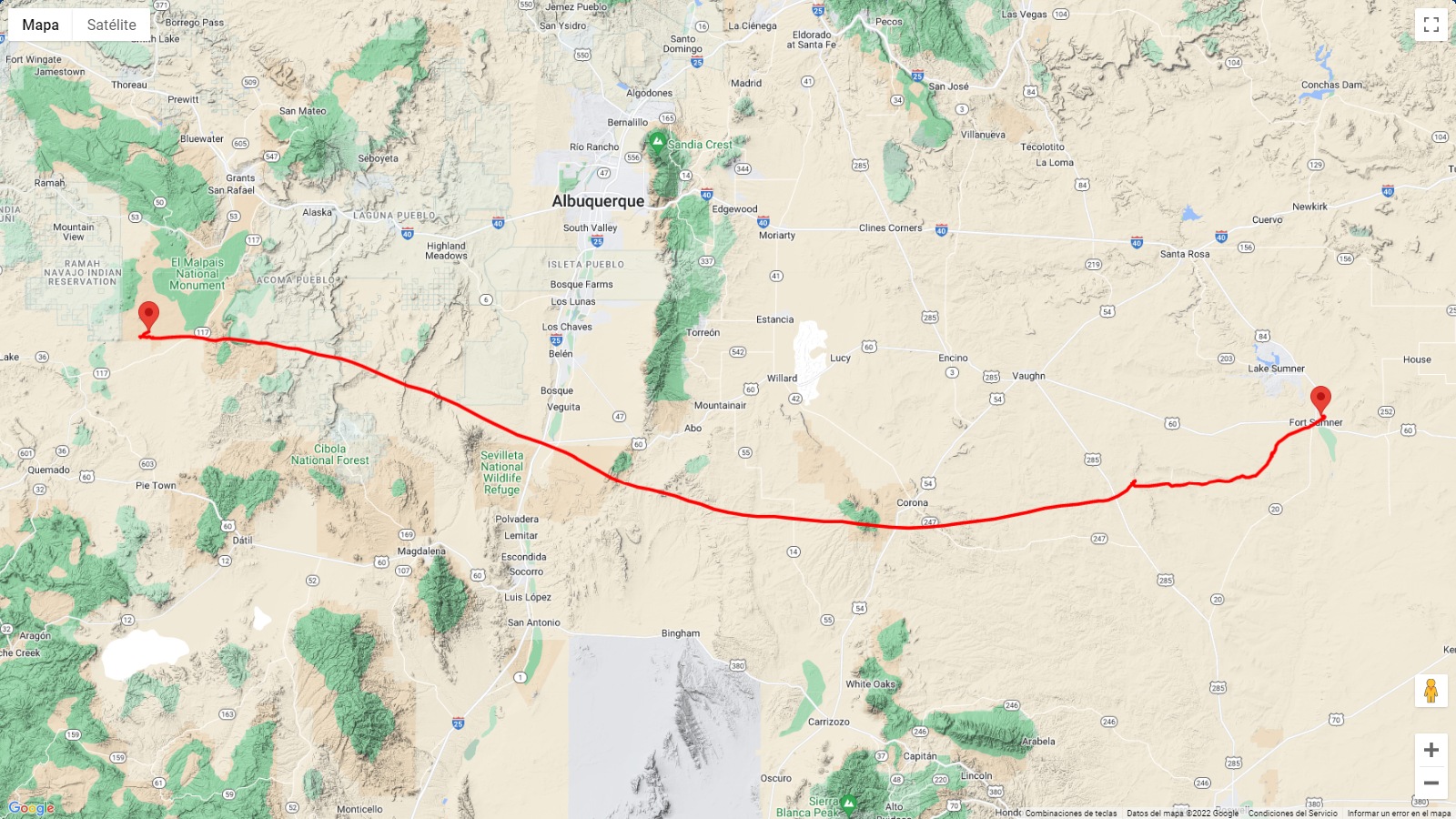
Balloon launched on: 9/7/2022 at 14:04 utc
Launch site: Scientific Flight Balloon Facility, Fort Sumner, (NM), US
Balloon launched by: Columbia Scientific Balloon Facility (CSBF)
Balloon manufacturer/size/composition: Zero Pressure Balloon Raven Aerostar 39.000.000 cuft
Flight identification number: 723N
End of flight (L for landing time, W for last contact, otherwise termination time): 9/7/2022 at 22:45 utc
Balloon flight duration (F: time at float only, otherwise total flight time in d:days / h:hours or m:minutes - ): 8 h 45 m
Landing site: In el Malpais National Conservation Area, New Mexico, US
External references
- Balloons in the Earth's Auroral Science: BALBOA's Modern Exploration Journal of Geophysical Research: Space Physics, 125, 2022
- NASA to Fly Six Scientific Balloons From New Mexico NASA website
16157If you consider this website interesting or useful, you can help me to keep it up and running with a small donation to cover the operational costs. Just the equivalent of the price of a cup of coffee helps a lot.

